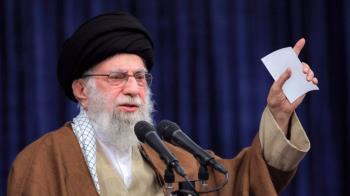Alwaght-The ISIS terrorists took over most of the governmental buildings, media institutions and university buildings in Sirte in Libya. They have spread snipers above the vital centers, as a way of showing power in the city, which seems that there are arrangements being made before a combat between ISIS and Misrata’s forces.
Sirte is now the hometown of Extremists – especially Ansar Al-Shariaa - after it was the hometown for Gadhafi. The Extremists resorted to the city after the attacks on the American embassy in Benghazi in 2012. This resulted in the breaking in of the Extremists’ residences by the citizens and their banishment from Benghazi. However, the Extremists returned to the city, where they are in a constant fight with the Libyan Army.
The atrocities of ISIS appears to have radicalized some militia members, making them recruits for ISIS.
The Unites States of America has fed up with the two fighting governments in Libya, and it has brought a third force led by General Khaled Hifter, a long-time CIA, who aims to be Libya’s new dictator. His forces are now contending with Al-Qaeda group Ansar Al-Sharia for control of Benghazi, which were previously armed by the NATO campaign in 2011. Back then, the NATO’s objective was to install a puppet regime in Libya instead of Gadhafi to gain control over the country’s resources.
On Wednesday, Italy asked for an urgent international action to stop Libya’s slide in anarchy. They showed their desire in monitoring a ceasefire and training the local armed forces.
Libya now a failed state with an economy in shambles, with two rival governments is battling for power, after the toppling of Muammar Al-Gadhaffi in 2011. However, Libya has succeeded in being a strong foothold for ISIS closer to the European countries.
The jeopardy became patent on Sunday, February 15, when a video went viral showing ISIS terrorists beheading 21 Egyptian Coptic Christians in Libya.
Italian Foreign Minister Paolo Gentiloni declared his anxiety against the risk of destabilizing neighboring countries due to possible alliances between local militias in Libya and ISIS terrorists. “The deterioration of the situation on the ground forces the international community to move more quickly before it’s too late,” he said. “There’s a clear risk of alliances between Daesh [ISIS] and local groups,” he added. “The situation must be monitored with the maximum attention.”
The Italian shores are about 660 kilometers away from the Libyan shores, a distance that can be crossed in rickety boats. This has led the European countries – France and Italy – and Egypt calling for International action.
The current situation is “precisely the consequence of the kind of war NATO waged in Libya, destroying the infrastructure, collapsing the state, and allowing a bunch of different militia groups to be treated as heroes,” said Vijay Prashad, a professor at Trinity College in Connecticut, and the author of “Arab Spring, Libyan Winter.”
According to Prashad, the intervention “created the situation where today there are two governments. And in that chaos, of course, what breeds most effectively is this group that calls itself the Islamic State.”
In 2011, the NATO declared their mission in Libya as “one of the most successful in NATO history”. The truth is, the intervention was nothing but sequential failures in Syria, Iraq and Libya.
“Far from a ‘revolution’ or struggle for ‘liberation,’ what the world is witnessing is the rape of Libya by a syndicate of imperialist powers determined to lay hold of its oil wealth and turn its territory into a neo-colonial base of operations for further interventions throughout the West Asia and North Africa.”
The consequences of Libya’s destruction are now so obvious. The war culminated in the carpet-bombing of Sirte, and the torture and murder of Al-Gadhafi. Back then, the Secretary of State Hillary Clinton rejoiced with smugness: “We came, we saw, he died.” Beyond that point, Libya has collapsed into a civil war between various militias, each trying to cease control. The country has also turned out to be a backyard for “CIA-backed Islamist forces” training to fight in Syria.
The American media still reports about ISIS atrocities as if “US imperialism had nothing to do with them.” The Times worries that “this oil-rich nation [is veering] towards complete chaos,” and that “the growth and radicalization of Islamist groups raise the possibility that large parts of Libya could become a satellite of the Islamic State.” It describes the conflict simply as a “civil war,” without even mentioning NATO’s six-month bombing of Libya.
The NATO has successfully made ISIS, stronger wherever it intervened. An article published by the Times admonished, “ISIS is expanding beyond its base in Syria and Iraq to establish military affiliates in Afghanistan, Algeria, Egypt, and Libya.” The Times ignores the fact that the U.S. has financed and trained those forces in the aforementioned countries. What is going on now in Libya is, in fact, due to the limitless greed of the U.S. and the NATO.
The Libya ISIS branch is an important factor for the funding of ISIS in Iraq and Syria, due to the boast oil resources.



























